Potatoes are delicious and nutrient-rich tubers and everyone loves them.
However, potatoes become bad and inedible when you keep them for a long time, especially if you do not store them well.
How can you store your potatoes so that they can last longer? How long will your potatoes last if you store them well? Read this article to find out.
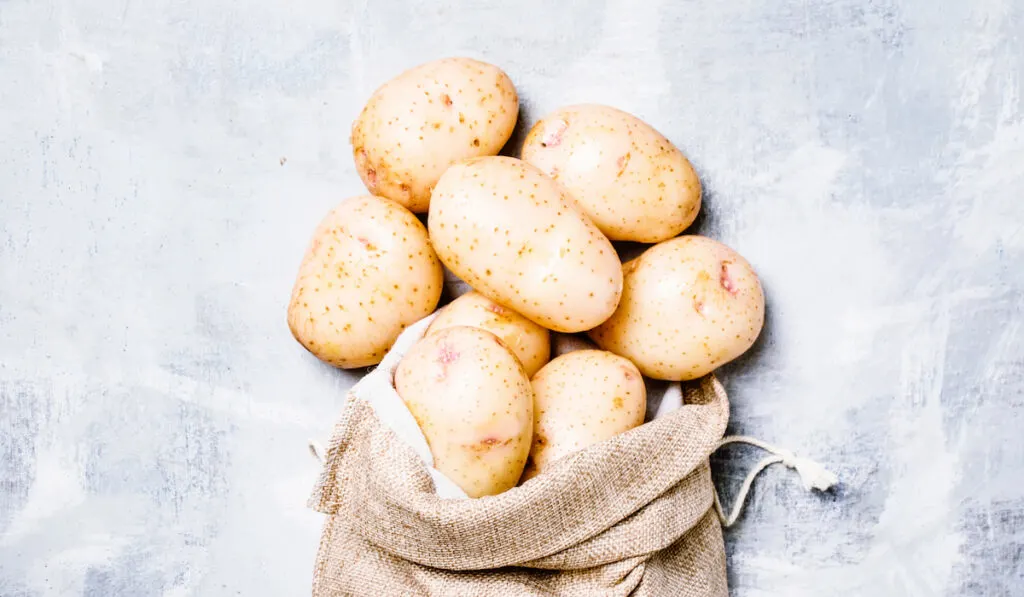
Table of Contents
How Long Do Potatoes Last?
Potatoes can last from two weeks to more than a year depending on your storage technique. The more effort you use in storing your potatoes, the longer they will last.
Some factors that affect the shelf life of potatoes include temperature, humidity, light exposure, and how well you handle the tubers.
The higher the temperature and humidity, the quicker your potatoes will spoil.
If you handle your potatoes with care and don’t give them bruises, they will last longer. Potatoes exposed to excess sunlight will spoil quickly.
As you can see, your preferred method of storing potatoes has to consider every one of the aforementioned factors.
How to Store Potatoes So They Can Last Longer
To help your potatoes last longer, you can leave them in a room, freeze or bury them, or convert them to dry flakes. Just keep them dry if you want them to last longer.
Here are the detailed methods of storing your tubers:

1. Leave Them in an Open Room or Basement
Keep your potatoes in a cool and relatively dry room. They can last two or more weeks when you keep them in an open room.
Don’t keep them directly on the floor, as it may be too cold and cause spots on the potatoes. Keep your potatoes in an open bag, basket, or crate so they do not have any direct contact with the floor.
While an open room is great for potatoes, ensure that direct sunlight does not reach your tubers.
Sunlight can make your potatoes turn green and spoil them quickly.
Lastly, keep pests away from your tubers. Occasionally, shake the crate or container so insect pests hiding between the potatoes will run.
Kill or dispose of the pests so your potatoes can be pest-free.
2. Freeze Them
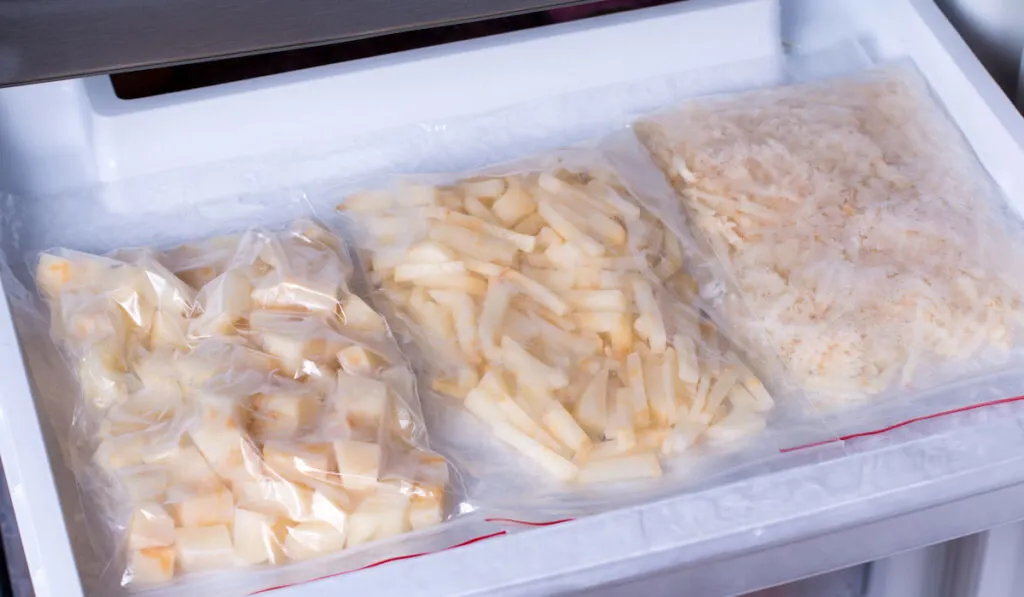
Of course, you can freeze your potatoes just like you freeze fruits. The ideal temperature to store potatoes is 43°F to 50°F. When stored properly, your potatoes can last for ten to twelve months.
Don’t expose your tubers in the freezer. Instead, keep them in Ziploc bags or anything that can prevent external moisture from reaching them.
Don’t wash or rinse your potatoes before freezing them, as the moisture can give them water spots which will cause them to spoil quickly.
When you remove your potatoes from the freezer, consume them quickly because they will go bad within a few days.
3. Bury the Potatoes
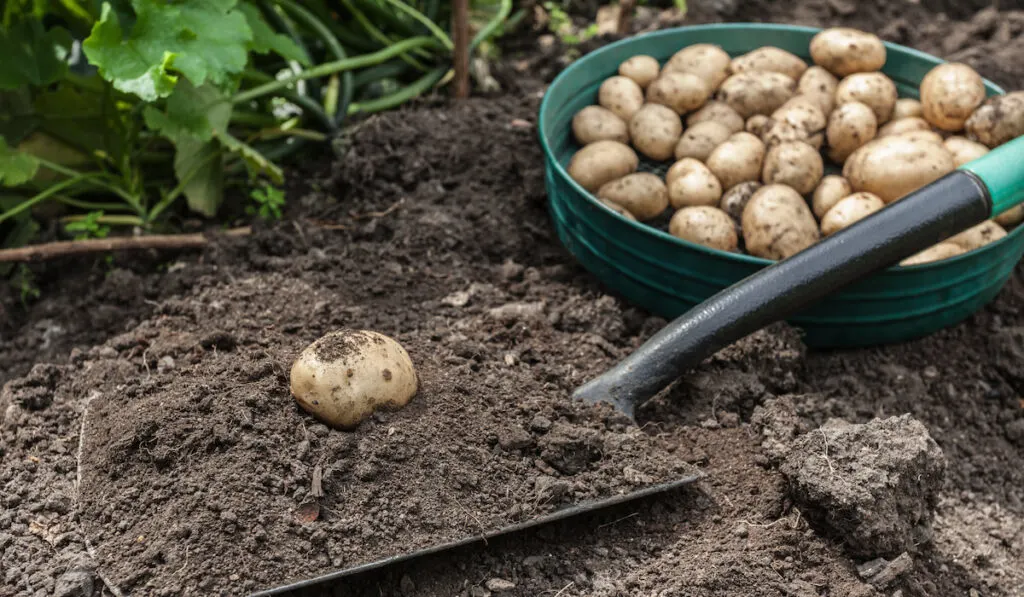
Farmers keep their tubers, such as yams and potatoes, for a long time by burying them, especially during the non-growing season months.
So long as your yard soil is not waterlogged, you can bury your potatoes 1-2 feet deep and cover them with soil, hay, or a mixture of dry materials.
When storing potatoes do not bury them still attached to a plant, as they will spoil quickly.
Also, remove your potatoes from the soil when the growing season approaches so the tubers do not start growing.
When you remove your potatoes from the soil, you can leave them with dirt still on their skin. Washing them can make them spoil faster, especially if you do not store them well.
4. Keep the Potatoes Far From Other Vegetables
Vegetables such as lettuces and cucumbers are water-filled, and if you keep them too close to potatoes, their moisture can increase the humidity around your potatoes, causing them to go bad.
Even fruits such as apples, watermelons, and bananas can make potatoes spoil quickly. When storing your potatoes, keep them with other potatoes or tubers or alone.
5. Make and Store Potato Flakes
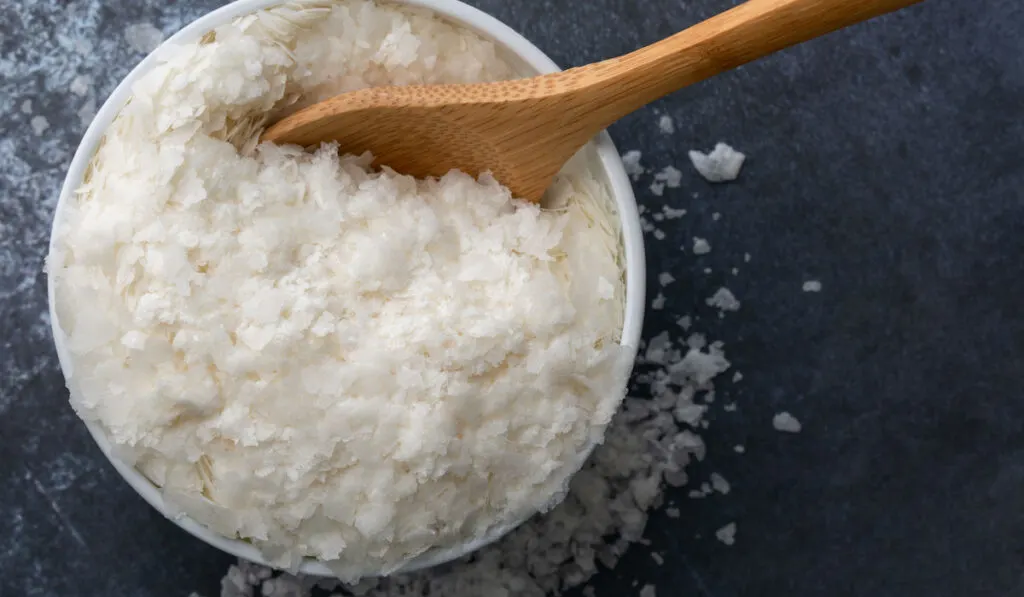
If you love eating potato flakes, convert your potatoes to flakes. Flakes last a very long time and are delicious.
After making the potato flakes, keep them free from moisture and high temperatures. You can keep the flakes in the kitchen cabinet. Just ensure that the flakes are free from water and humidity.
How to Know When to Dispose of Your Potatoes
After storing your potatoes, especially for a long time, check that they are still safe for consumption before eating them. If they’re not safe for consumption, dispose of them.
To tell if your potatoes are safe to eat or not, check for these signs:
1. Presence of Mold

Can you see mold growing on your potatoes? The presence of mold on your potatoes can tell you that your potatoes are bad and not edible.
If you slice the potatoes open, you will see that the bright tuber (i.e., the inside) is now brown or black. This signifies that fungi and other microbes are attacking the tubers.
Dispose of potatoes with mold, as they are no longer edible. Even the parts without mold will likely taste bitter, so there’s no need to save them.
2. Your Potatoes Are Green
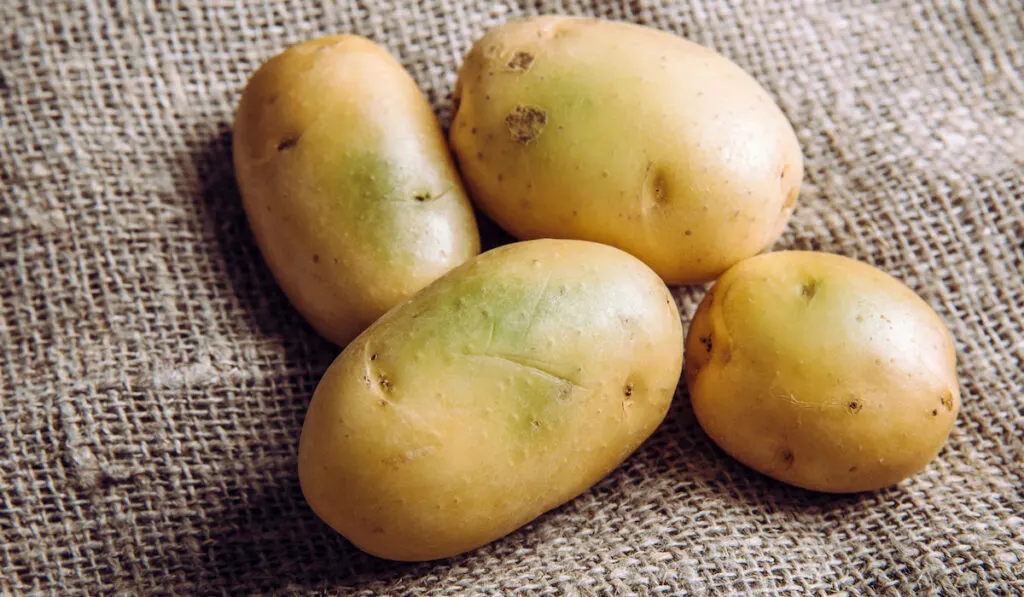
Green potatoes are toxic potatoes.
When your potatoes go green, it shows that the tubers will soon start growing.
Don’t forget that the potato plant is in the nightshade family. Nightshade plants have the solanine toxin. When your potatoes go green, they become loaded with this toxin.
Dispose of green potatoes. If the color of the tubers and their toxin do but discourage you, their taste will.
Green potatoes are very bitter and more difficult to soften by boiling.
3. Presence of Sprouts
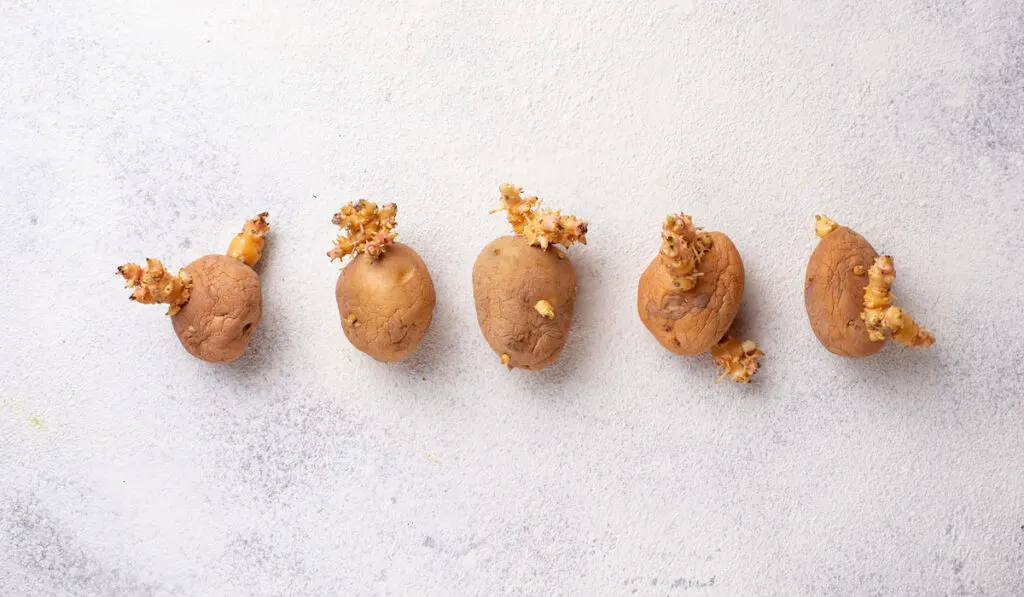
Potatoes usually become green because they are exposed to sunlight. However, they can still grow and develop sprouts without turning green.
When the environment (especially temperature) is ideal, your potatoes will start growing; in time, you will see very long sprouts. Don’t eat your growing potatoes.
Consider planting them in your garden instead of eating or disposing of the growing potatoes. In a few months, they will give you more potatoes.
4. Foul Smell
Don’t eat potatoes with a foul smell, as they are already rotting. Rotting potatoes can make you sick, so dispose of them immediately.
Potatoes with a foul smell usually have nothing edible inside, as the entire tuber will likely be brown or black inside.
If one potato surrounded by others has a foul smell, check the others and ensure they are still safe for eating. If possible, eat them quickly, as they may spoil soon.
5. Dark and Watery Spots or Bruises
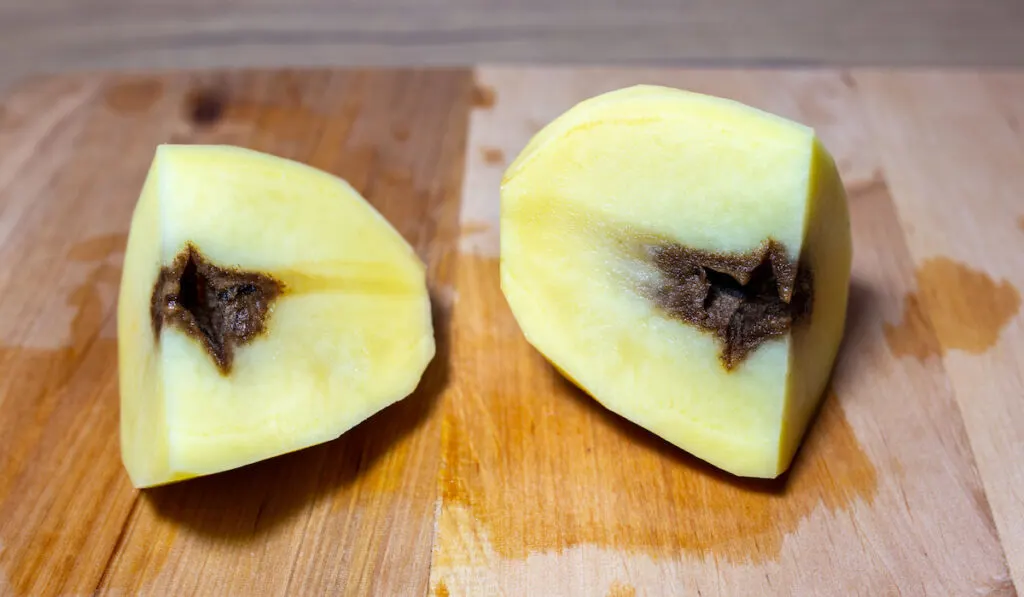
Examine your potatoes. Are some parts of the tubers dark-colored or watery (soft)? These spots on your potatoes are signs that the potatoes will soon go bad.
You can cut off the brown or watery parts of the potato tubers and eat the remaining parts if you like. Just ensure that you don’t eat the spoiled parts.
Final Thoughts
When you apply the tips in this article, your potatoes will last longer. Remember to store your potatoes dry if you intend to keep them for a very long time.
Also, after keeping your potatoes for a long time, check them and ensure they are safe for eating.
